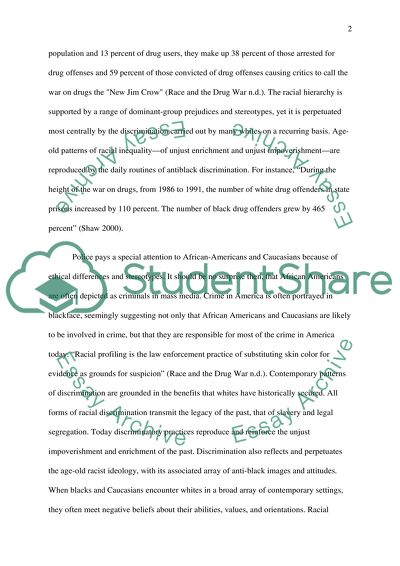Cite this document
(“Racial Profiling on Drug Warfare Essay Example | Topics and Well Written Essays - 2000 words”, n.d.)
Racial Profiling on Drug Warfare Essay Example | Topics and Well Written Essays - 2000 words. Retrieved from https://studentshare.org/miscellaneous/1528706-racial-profiling-on-drug-warfare
Racial Profiling on Drug Warfare Essay Example | Topics and Well Written Essays - 2000 words. Retrieved from https://studentshare.org/miscellaneous/1528706-racial-profiling-on-drug-warfare
(Racial Profiling on Drug Warfare Essay Example | Topics and Well Written Essays - 2000 Words)
Racial Profiling on Drug Warfare Essay Example | Topics and Well Written Essays - 2000 Words. https://studentshare.org/miscellaneous/1528706-racial-profiling-on-drug-warfare.
Racial Profiling on Drug Warfare Essay Example | Topics and Well Written Essays - 2000 Words. https://studentshare.org/miscellaneous/1528706-racial-profiling-on-drug-warfare.
“Racial Profiling on Drug Warfare Essay Example | Topics and Well Written Essays - 2000 Words”, n.d. https://studentshare.org/miscellaneous/1528706-racial-profiling-on-drug-warfare.


